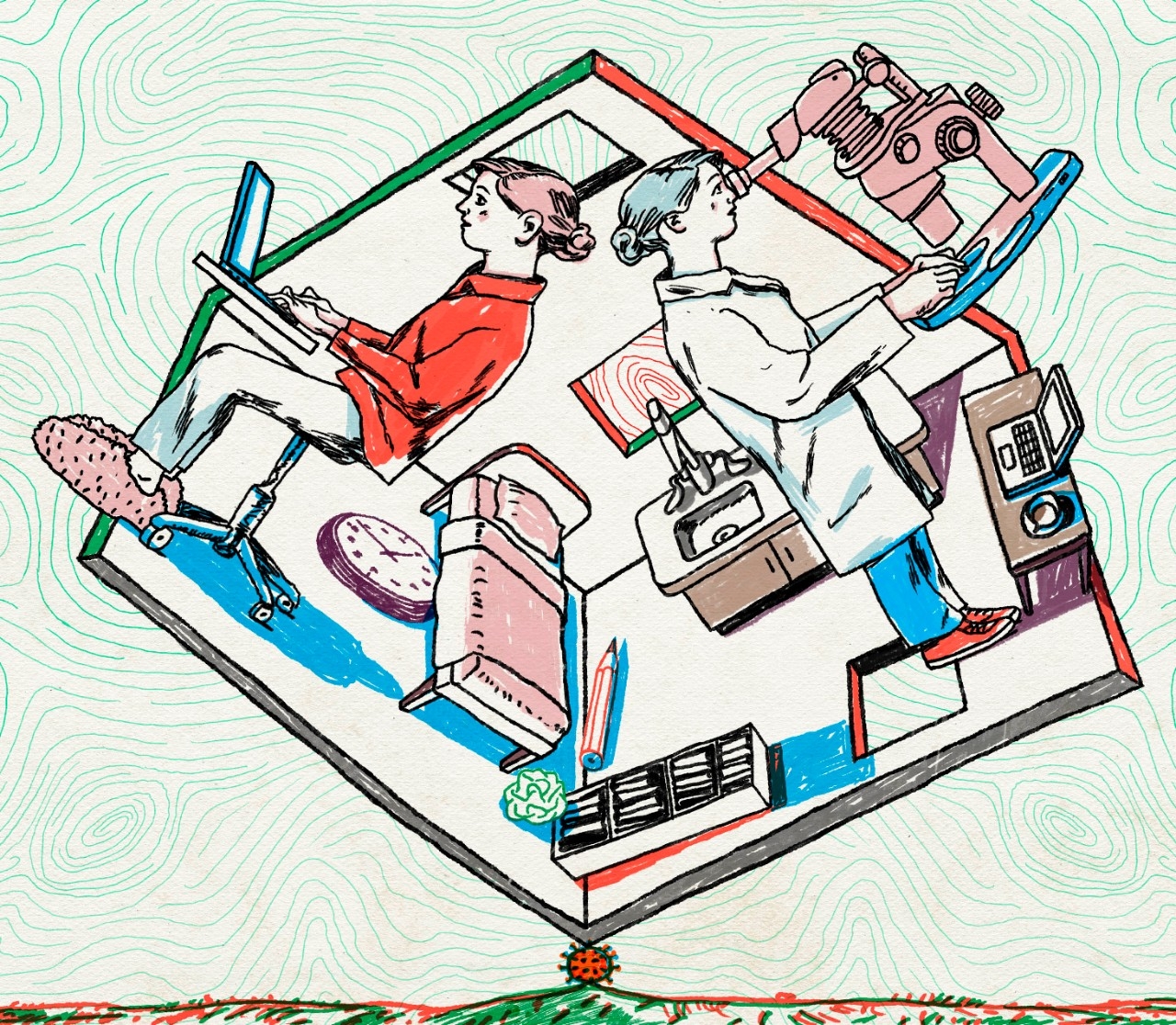Hands-off learning
How a pandemic is changing medical education

Stanford medical student Kevin Cyr, limited by the pandemic to taking classes remotely, designed a face shield that was manufactured and distributed to physicians and nurses.
His classmate Kiah Williams, exposed to the virus and in quarantine, organized a babysitting service for Stanford physicians suddenly without care for young children. Doctoral candidate Julia McKechnie, forced to postpone her research into dengue virus, switched to processing blood samples from COVID-19 patients.
Shelter-in-place orders, issued in March to combat the coronavirus, disrupted medical education at institutions around the world. But the Stanford University School of Medicine students — who earn medical degrees, master’s degrees in physician assistant studies, and doctoral and master’s degrees in biomedical sciences — not only generally graduated on time but many also found ways to pitch in.
“As future physicians, we all want to help out,” said Cyr, an engineering major. “I’m glad I can provide some expertise.”
For the spring quarter, classwork moved online, but many medical and physician assistant students were initially barred from clinical rotations in which they help diagnose and treat patients. Masks, gowns and gloves limit the virus’s spread, but supplies were scarce and reserved for health care teams.
Instead, the students joined clinicians on video visits; they also participated in computer-simulated visits that allow them to ask questions, listen to heart and lung sounds, and view lab results.
“The real challenge is the examination,” said Lars Osterberg, MD, PhD, associate professor of medicine, who oversees the Stanford medical students’ clinical education. “Nuances like where you place the stethoscope can’t be taught online.”
Clinical rotations restarted May 26: Some, including in psychiatry and radiology, work well in online formats and will remain there, Osterberg said; others, including in surgery and obstetrics, must be completed in person.
Starting in June, research labs, most of which had shuttered, re-opened for part-time research, allowing the doctoral students to conduct their experiments while social distancing.
Despite the challenges, all 87 of Stanford’s graduating medical students and all 27 of the graduating physician assistant students finished on time. A few doctoral students will take longer to wrap up their research, said Sheri Krams, PhD, associate dean for graduate education and postdoctoral affairs, but they tend to graduate throughout the academic year anyway.
“The students have been incredibly resilient through all of this,” said Rhonda Larsen, associate director of the program for physician assistants, whose role is similar to that of nurse practitioners. “They’ve shown amazing patience and a lot of compassion.”
When new and continuing medical and physician assistant students arrived on campus in mid-August, they were grouped into small cohorts that live and study together. They work online as much as possible, but when in-person instruction is required — such as for anatomy, which involves dissecting a cadaver — students wear protective equipment, spread out among classrooms and undergo COVID-19 testing. PhD students, who started in September, are working in their labs in shifts.
The educators see some advantages to the new protocols. Krams has noticed that, with limited time in the lab, doctoral students are more organized about research: “They’re using their time quite efficiently,” she said.
Lloyd Minor, MD, dean of the school of medicine, noted that students tend to ask more questions during a lecture when classes are taught remotely. And Larsen and Osterberg see the students becoming skilled online practitioners who effectively convey compassion and interpret patients’ demeanor through cyberspace.
“They’re really learning how to use telemedicine,” Larsen said, “and that’s the wave of the future.”

